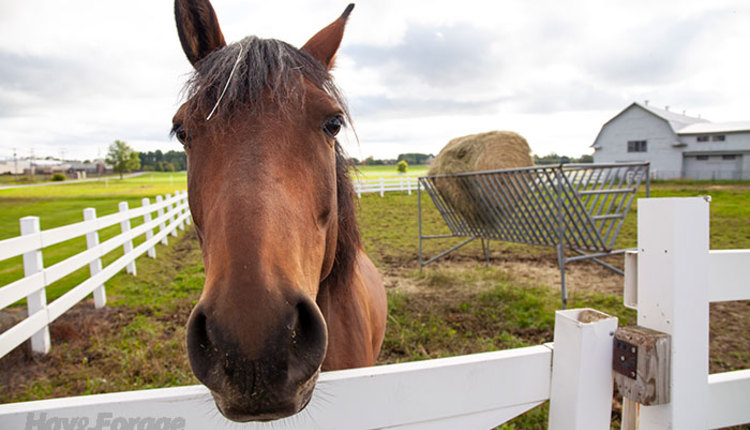
As the weather gets warmer and pasture grasses begin to get green, horse owners become eager to start grazing. However, starting too soon can be damaging to the health of your horses and your pastures.
“When horse pastures reach 6 to 8 inches, begin grazing for 15 minutes, increasing the grazing time each day by 15 minutes until five hours of consecutive grazing is reached,” recommends Krishona Martinson, a University of Minnesota extension horse specialist. After the slow transition, unrestricted grazing can occur.
Martinson explains that while dry hay and fresh pasture grass are both forage sources, their differences make a large impact on a horse’s digestive process. Dried hay is 15% moisture, while grass from the pasture is 85% moisture.
“The horse is a hind-gut, fermenting herbivore that relies extensively on the microbes present in its gastrointestinal tract to be able to process forages,” Martinson explains. “If the feedstuffs the microbes are utilizing change suddenly, there may be too little time for the microbial populations to adjust to the change. Large numbers of them die, while others flourish, setting up a situation where toxins may be absorbed by the horse, resulting in digestive dysfunction and possibly colic,” the specialist adds. A gradual transition from hay to pasture allows the microbial populations enough time to adjust.
Better for pastures
In addition to affecting the horse’s health, grazing too early can damage your pastures. Plants rely on photosynthesis to produce chemical energy that helps them grow. This process occurs primarily in the leaves, so if grasses are grazed too early or too often, plants can become less vigorous and their root structures will be damaged.
“Early and overgrazing will lead to eventual die back with overgrazed areas being replaced by undesirable plant species or weeds,” Martinson notes. She recommends pulling horses off pastures when grass residual reaches 3 to 4 inches and to resume grazing when grass regrowth reaches at least 6 to 8 inches.
The equine specialist explains that, on average, about 2 acres of well-managed pasture can provide the forage needs for one horse during the grazing season.

Michaela King served as the 2019 Hay & Forage Grower summer editorial intern. She currently attends the University of Minnesota-Twin Cities and is majoring in professional journalism and photography. King grew up on a beef farm in Big Bend, Wis., where her 4-H experiences included showing both beef and dairy cattle.

